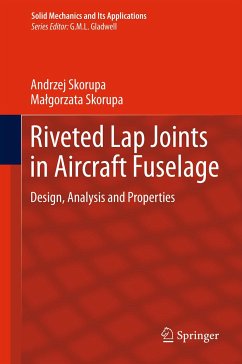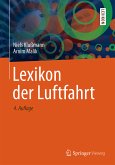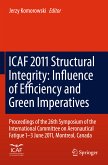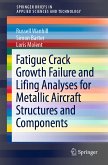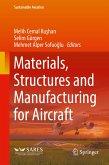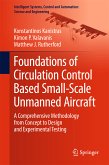Andrzej Skorupa, Małgorzata Skorupa
Riveted Lap Joints in Aircraft Fuselage (eBook, PDF)
Design, Analysis and Properties
149,79 €
inkl. MwSt.
Sofort per Download lieferbar
Andrzej Skorupa, Małgorzata Skorupa
Riveted Lap Joints in Aircraft Fuselage (eBook, PDF)
Design, Analysis and Properties
- Format: PDF
- Merkliste
- Auf die Merkliste
- Bewerten Bewerten
- Teilen
- Produkt teilen
- Produkterinnerung
- Produkterinnerung

Bitte loggen Sie sich zunächst in Ihr Kundenkonto ein oder registrieren Sie sich bei
bücher.de, um das eBook-Abo tolino select nutzen zu können.
Hier können Sie sich einloggen
Hier können Sie sich einloggen
Sie sind bereits eingeloggt. Klicken Sie auf 2. tolino select Abo, um fortzufahren.

Bitte loggen Sie sich zunächst in Ihr Kundenkonto ein oder registrieren Sie sich bei bücher.de, um das eBook-Abo tolino select nutzen zu können.
Fatigue of the pressurized fuselages of transport aircraft is a significant problem all builders and users of aircraft have to cope with for reasons associated with assuring a sufficient lifetime and safety, and formulating adequate inspection procedures. These aspects are all addressed in various formal protocols for creating and maintaining airworthiness, including damage tolerance considerations. In most transport aircraft, fatigue occurs in lap joints, sometimes leading to circumstances that threaten safety in critical ways. The problem of fatigue of lap joints has been considerably…mehr
- Geräte: PC
- ohne Kopierschutz
- eBook Hilfe
- Größe: 10.65MB
- Upload möglich
Andere Kunden interessierten sich auch für
![Lexikon der Luftfahrt (eBook, PDF) Lexikon der Luftfahrt (eBook, PDF)]() Niels KlußmannLexikon der Luftfahrt (eBook, PDF)109,99 €
Niels KlußmannLexikon der Luftfahrt (eBook, PDF)109,99 €![ICAF 2011 Structural Integrity: Influence of Efficiency and Green Imperatives (eBook, PDF) ICAF 2011 Structural Integrity: Influence of Efficiency and Green Imperatives (eBook, PDF)]() ICAF 2011 Structural Integrity: Influence of Efficiency and Green Imperatives (eBook, PDF)309,23 €
ICAF 2011 Structural Integrity: Influence of Efficiency and Green Imperatives (eBook, PDF)309,23 €![Fatigue Crack Growth Failure and Lifing Analyses for Metallic Aircraft Structures and Components (eBook, PDF) Fatigue Crack Growth Failure and Lifing Analyses for Metallic Aircraft Structures and Components (eBook, PDF)]() Russell WanhillFatigue Crack Growth Failure and Lifing Analyses for Metallic Aircraft Structures and Components (eBook, PDF)53,49 €
Russell WanhillFatigue Crack Growth Failure and Lifing Analyses for Metallic Aircraft Structures and Components (eBook, PDF)53,49 €![Materials, Structures and Manufacturing for Aircraft (eBook, PDF) Materials, Structures and Manufacturing for Aircraft (eBook, PDF)]() Materials, Structures and Manufacturing for Aircraft (eBook, PDF)149,79 €
Materials, Structures and Manufacturing for Aircraft (eBook, PDF)149,79 €![Miles' Equation in Random Vibrations (eBook, PDF) Miles' Equation in Random Vibrations (eBook, PDF)]() Jaap WijkerMiles' Equation in Random Vibrations (eBook, PDF)139,09 €
Jaap WijkerMiles' Equation in Random Vibrations (eBook, PDF)139,09 €![Foundations of Circulation Control Based Small-Scale Unmanned Aircraft (eBook, PDF) Foundations of Circulation Control Based Small-Scale Unmanned Aircraft (eBook, PDF)]() Konstantinos KanistrasFoundations of Circulation Control Based Small-Scale Unmanned Aircraft (eBook, PDF)96,29 €
Konstantinos KanistrasFoundations of Circulation Control Based Small-Scale Unmanned Aircraft (eBook, PDF)96,29 €![Einführung in die DEMAR (eBook, PDF) Einführung in die DEMAR (eBook, PDF)]() Martin HinschEinführung in die DEMAR (eBook, PDF)66,99 €
Martin HinschEinführung in die DEMAR (eBook, PDF)66,99 €-
-
-
Fatigue of the pressurized fuselages of transport aircraft is a significant problem all builders and users of aircraft have to cope with for reasons associated with assuring a sufficient lifetime and safety, and formulating adequate inspection procedures. These aspects are all addressed in various formal protocols for creating and maintaining airworthiness, including damage tolerance considerations. In most transport aircraft, fatigue occurs in lap joints, sometimes leading to circumstances that threaten safety in critical ways. The problem of fatigue of lap joints has been considerably enlarged by the goal of extending aircraft lifetimes.
Fatigue of riveted lap joints between aluminium alloy sheets, typical of the pressurized aircraft fuselage, is the major topic of the present book. The richly illustrated and well-structured chapters treat subjects such as: structural design solutions and loading conditions for fuselage skin joints; relevance of laboratory test results for simple lap joint specimens to riveted joints in a real structure; effect of various production and design related variables on the riveted joint fatigue behaviour; analytical and experimental results on load transmission in mechanically fastened lap joints; theoretical and experimental analysis of secondary bending and its implications for riveted joint fatigue performance; nucleation and shape development of fatigue cracks in riveted longitudinal lap joints; overview of experimental investigations into the multi-site damage for full scale fuselage panels and riveted lap joint specimens; fatigue crack growth and fatigue life prediction methodology for riveted lap joints; residual strength predictions for riveted lap joints in a fuselage structure. The major issues of each chapter arerecapitulated in the last section.
Fatigue of riveted lap joints between aluminium alloy sheets, typical of the pressurized aircraft fuselage, is the major topic of the present book. The richly illustrated and well-structured chapters treat subjects such as: structural design solutions and loading conditions for fuselage skin joints; relevance of laboratory test results for simple lap joint specimens to riveted joints in a real structure; effect of various production and design related variables on the riveted joint fatigue behaviour; analytical and experimental results on load transmission in mechanically fastened lap joints; theoretical and experimental analysis of secondary bending and its implications for riveted joint fatigue performance; nucleation and shape development of fatigue cracks in riveted longitudinal lap joints; overview of experimental investigations into the multi-site damage for full scale fuselage panels and riveted lap joint specimens; fatigue crack growth and fatigue life prediction methodology for riveted lap joints; residual strength predictions for riveted lap joints in a fuselage structure. The major issues of each chapter arerecapitulated in the last section.
Produktdetails
- Produktdetails
- Verlag: Springer Netherland
- Erscheinungstermin: 23. Juni 2012
- Englisch
- ISBN-13: 9789400742826
- Artikelnr.: 37773569
- Verlag: Springer Netherland
- Erscheinungstermin: 23. Juni 2012
- Englisch
- ISBN-13: 9789400742826
- Artikelnr.: 37773569
Preface.- Nomenclature.- Acknowledgements.- Units and conversion factors,- Chapter 1: Riveted lap joints in a pressurized aircraft fuselage.- 1.1. Constructional solutions of the fuselage skin structure.- 1.2. Loading conditions for a longitudinal lap splice joint.- 1.3. Bonded and riveted-bonded lap joints.- 1.4. Fatigue damage of longitudinal lap splice joints.- 1.5. Summary of this chapter.- Chapter 2: Differences between the fatigue behaviour of Longitudinal lap joints in a Pressurized fuselage and laboratory lap joint specimens.- 2.1. Stress distribution and specimen geometry.- 2.2. Effect of the load frequency and environmental conditions.- 2.3. Summary of this chapter.- Chapter 3: Production variables influencing the fatigue behaviour of riveted lap jointS.- 3.1. Sheet material.- 3.2. Fastener type and material.- 3.3. Manufacturing process.- 3.3.1. Riveting method.- 3.3.2. Imperfections of rivet holes.- 3.3.3. Cold working of rivet holes.- 3.3.4. Surface treatment of the sheets.- 3.3.5. Squeeze force.- (a) Effect of the squeeze force on fatigue life.- (b) Dependence of rivet driven head dimensions on the squeeze force.- (c) Dependence of rivet hole expansion on the squeeze force.- (d) Residual stresses due to the riveting process.- 3.4. Summary of this chapter.- Chapter 4: Design parameters influencing the fatigue behaviour of riveted lap joints.- 4.1. Number of rivet rows.- 4.2. Rivet row spacing.- 4.3. Rivet pitch in row.- 4.4. Distance of the rivet from the sheet edge.- 4.5. Rivet pattern.- 4.6. Sheet thickness.- 4.7. Size effect .- 4.8. Summary of this chapter.- Chapter 5: Load transfer in lap joints with mechanical fasteners.- 5.1. Simple computation of axial forces in the sheets.- 5.2. Fastener flexibility.- 5.2.1. Analytical solution.- 5.2.2. Experimental determination.- 5.3. Measurement results on load transmission.- 5.4. Frictional forces.- 5.5. Summary of this chapter.- Chapter 6: Secondary bending for mechanically fastened joints with eccentricities.- 6. 1. The phenomenon of secondary bending.- 6.2. Analytical investigations .- 6.2.1. Models.- 6.2.2. Exemplary applications to lap joints.- (a) Standard geometry.- (b) Padded and staggered thickness geometry.- 6.3. Finite element modelling.- 6.4. Measurements of secondary bending .- 6.4.1. Methodology.- 6.4.2. Comparisons between measured and computed results.- 6.4.3. Parametric studies.- 6.4.4. In situ measurement results.- 6.5. Fatigue behaviour of joints exhibiting secondary bending.- 6.5.1. Effect of secondary bending on fatigue life.- 6.5.2. Effect of faying surface conditions .- 6.6. Summary of this chapter.- Chapter 7: Crack initiation location and crack shape development in riveted lap joints – experimental trends.- 7.1. Crack initiation site.- 7.1.1. Static loading.- 7.1.2. Fatigue loading.- 7.2. The role of fretting .- 7.2.1. The phenomenon of fretting.- 7.2.2. Cracking in the presence of fretting.- 7.3. Fatigue crack shape development.- 7.4. Summary of this chapter.- Chapter 8: Multiple-Site Damage in riveted lap joints – experimental observations.- 8.1. Examples of aircraft catastrophic failure due to MSD.- 8.2. Experimental investigations of MSD.- 8.2.1. Multiple-Site Damage versus Single-Site Damage.- 8.2.2. Influence of the riveting force on MS.- 8.2.3. MSD under biaxial loading.- 8.2.4. MSD tests on fuselage panels.- 8.2.5. Effect of fuselage design on MSD.- 8.2.6. Effect of bending, overloads and underloads on MSD.- 8.2.7. Fatigue behaviour of lap joints repaired by riveting.- 8.2.8. Approach to the MSD in aging and new aircraft.- 8.3. Summary of this chapter.- Chapter 9: predictions of Fatigue crack growth and fatigue life for riveted lap joints.- 9.1. Introduction.- 9.2. Crack growth prediction models.- 9.3. Stress intensity factor solutions.- 9.4. Equivalent initial flaw size (EIFS).- 9.5. Fatigue life predictions.- 9.6. Summary of this chapter.- Chapter 10: Residual strength prediction for riveted lap joints in fuselage structures.- 10. 1. Introduction.- 10.2. Crack link-up and failure criteria.- 10.2.1. Plastic zone link-up (PZL) criterion.- 10.2.2. Elastic-plastic fracture mechanics failure criteria .- (a) CTOA failure criterion.- (b) T*-integral failure criterion.- 10.3. Crack growth directional criteria .- 10.4. Computational issues.- 10.5. Comparisons between predicted and measured residual strength for fuselage lap joints for self-similar crack growth.- 10.5.1. Flat panels .- 10.5.2. Curved panels.- 10.6. Comparisons between observed and predicted effect of tear straps on crack path.- 10.7. Summary of this chapter.
Preface.- Nomenclature.- Acknowledgements.- Units and conversion factors,- Chapter 1: Riveted lap joints in a pressurized aircraft fuselage.- 1.1. Constructional solutions of the fuselage skin structure.- 1.2. Loading conditions for a longitudinal lap splice joint.- 1.3. Bonded and riveted-bonded lap joints.- 1.4. Fatigue damage of longitudinal lap splice joints.- 1.5. Summary of this chapter.- Chapter 2: Differences between the fatigue behaviour of Longitudinal lap joints in a Pressurized fuselage and laboratory lap joint specimens.- 2.1. Stress distribution and specimen geometry.- 2.2. Effect of the load frequency and environmental conditions.- 2.3. Summary of this chapter.- Chapter 3: Production variables influencing the fatigue behaviour of riveted lap jointS.- 3.1. Sheet material.- 3.2. Fastener type and material.- 3.3. Manufacturing process.- 3.3.1. Riveting method.- 3.3.2. Imperfections of rivet holes.- 3.3.3. Cold working of rivet holes.- 3.3.4. Surface treatment of the sheets.- 3.3.5. Squeeze force.- (a) Effect of the squeeze force on fatigue life.- (b) Dependence of rivet driven head dimensions on the squeeze force.- (c) Dependence of rivet hole expansion on the squeeze force.- (d) Residual stresses due to the riveting process.- 3.4. Summary of this chapter.- Chapter 4: Design parameters influencing the fatigue behaviour of riveted lap joints.- 4.1. Number of rivet rows.- 4.2. Rivet row spacing.- 4.3. Rivet pitch in row.- 4.4. Distance of the rivet from the sheet edge.- 4.5. Rivet pattern.- 4.6. Sheet thickness.- 4.7. Size effect .- 4.8. Summary of this chapter.- Chapter 5: Load transfer in lap joints with mechanical fasteners.- 5.1. Simple computation of axial forces in the sheets.- 5.2. Fastener flexibility.- 5.2.1. Analytical solution.- 5.2.2. Experimental determination.- 5.3. Measurement results on load transmission.- 5.4. Frictional forces.- 5.5. Summary of this chapter.- Chapter 6: Secondary bending for mechanically fastened joints with eccentricities.- 6. 1. The phenomenon of secondary bending.- 6.2. Analytical investigations .- 6.2.1. Models.- 6.2.2. Exemplary applications to lap joints.- (a) Standard geometry.- (b) Padded and staggered thickness geometry.- 6.3. Finite element modelling.- 6.4. Measurements of secondary bending .- 6.4.1. Methodology.- 6.4.2. Comparisons between measured and computed results.- 6.4.3. Parametric studies.- 6.4.4. In situ measurement results.- 6.5. Fatigue behaviour of joints exhibiting secondary bending.- 6.5.1. Effect of secondary bending on fatigue life.- 6.5.2. Effect of faying surface conditions .- 6.6. Summary of this chapter.- Chapter 7: Crack initiation location and crack shape development in riveted lap joints - experimental trends.- 7.1. Crack initiation site.- 7.1.1. Static loading.- 7.1.2. Fatigue loading.- 7.2. The role of fretting .- 7.2.1. The phenomenon of fretting.- 7.2.2. Cracking in the presence of fretting.- 7.3. Fatigue crack shape development.- 7.4. Summary of this chapter.- Chapter 8: Multiple-Site Damage in riveted lap joints - experimental observations.- 8.1. Examples of aircraft catastrophic failure due to MSD.- 8.2. Experimental investigations of MSD.- 8.2.1. Multiple-Site Damage versus Single-Site Damage.- 8.2.2. Influence of the riveting force on MS.- 8.2.3. MSD under biaxial loading.- 8.2.4. MSD tests on fuselage panels.- 8.2.5. Effect of fuselage design on MSD.- 8.2.6. Effect of bending, overloads and underloads on MSD.- 8.2.7. Fatigue behaviour of lap joints repaired by riveting.- 8.2.8. Approach to the MSD in aging and new aircraft.- 8.3. Summary of this chapter.- Chapter 9: predictions of Fatigue crack growth and fatigue life for riveted lap joints.- 9.1. Introduction.- 9.2. Crack growth prediction models.- 9.3. Stress intensity factor solutions.- 9.4. Equivalent initial flaw size (EIFS).- 9.5. Fatigue life predictions.- 9.6. Summary of this chapter.- Chapter 10: Residual strength prediction for riveted lap joints in fuselage structures.- 10. 1. Introduction.- 10.2. Crack link-up and failure criteria.- 10.2.1. Plastic zone link-up (PZL) criterion.- 10.2.2. Elastic-plastic fracture mechanics failure criteria .- (a) CTOA failure criterion.- (b) T*-integral failure criterion.- 10.3. Crack growth directional criteria .- 10.4. Computational issues.- 10.5. Comparisons between predicted and measured residual strength for fuselage lap joints for self-similar crack growth.- 10.5.1. Flat panels .- 10.5.2. Curved panels.- 10.6. Comparisons between observed and predicted effect of tear straps on crack path.- 10.7. Summary of this chapter.
Preface.- Nomenclature.- Acknowledgements.- Units and conversion factors,- Chapter 1: Riveted lap joints in a pressurized aircraft fuselage.- 1.1. Constructional solutions of the fuselage skin structure.- 1.2. Loading conditions for a longitudinal lap splice joint.- 1.3. Bonded and riveted-bonded lap joints.- 1.4. Fatigue damage of longitudinal lap splice joints.- 1.5. Summary of this chapter.- Chapter 2: Differences between the fatigue behaviour of Longitudinal lap joints in a Pressurized fuselage and laboratory lap joint specimens.- 2.1. Stress distribution and specimen geometry.- 2.2. Effect of the load frequency and environmental conditions.- 2.3. Summary of this chapter.- Chapter 3: Production variables influencing the fatigue behaviour of riveted lap jointS.- 3.1. Sheet material.- 3.2. Fastener type and material.- 3.3. Manufacturing process.- 3.3.1. Riveting method.- 3.3.2. Imperfections of rivet holes.- 3.3.3. Cold working of rivet holes.- 3.3.4. Surface treatment of the sheets.- 3.3.5. Squeeze force.- (a) Effect of the squeeze force on fatigue life.- (b) Dependence of rivet driven head dimensions on the squeeze force.- (c) Dependence of rivet hole expansion on the squeeze force.- (d) Residual stresses due to the riveting process.- 3.4. Summary of this chapter.- Chapter 4: Design parameters influencing the fatigue behaviour of riveted lap joints.- 4.1. Number of rivet rows.- 4.2. Rivet row spacing.- 4.3. Rivet pitch in row.- 4.4. Distance of the rivet from the sheet edge.- 4.5. Rivet pattern.- 4.6. Sheet thickness.- 4.7. Size effect .- 4.8. Summary of this chapter.- Chapter 5: Load transfer in lap joints with mechanical fasteners.- 5.1. Simple computation of axial forces in the sheets.- 5.2. Fastener flexibility.- 5.2.1. Analytical solution.- 5.2.2. Experimental determination.- 5.3. Measurement results on load transmission.- 5.4. Frictional forces.- 5.5. Summary of this chapter.- Chapter 6: Secondary bending for mechanically fastened joints with eccentricities.- 6. 1. The phenomenon of secondary bending.- 6.2. Analytical investigations .- 6.2.1. Models.- 6.2.2. Exemplary applications to lap joints.- (a) Standard geometry.- (b) Padded and staggered thickness geometry.- 6.3. Finite element modelling.- 6.4. Measurements of secondary bending .- 6.4.1. Methodology.- 6.4.2. Comparisons between measured and computed results.- 6.4.3. Parametric studies.- 6.4.4. In situ measurement results.- 6.5. Fatigue behaviour of joints exhibiting secondary bending.- 6.5.1. Effect of secondary bending on fatigue life.- 6.5.2. Effect of faying surface conditions .- 6.6. Summary of this chapter.- Chapter 7: Crack initiation location and crack shape development in riveted lap joints – experimental trends.- 7.1. Crack initiation site.- 7.1.1. Static loading.- 7.1.2. Fatigue loading.- 7.2. The role of fretting .- 7.2.1. The phenomenon of fretting.- 7.2.2. Cracking in the presence of fretting.- 7.3. Fatigue crack shape development.- 7.4. Summary of this chapter.- Chapter 8: Multiple-Site Damage in riveted lap joints – experimental observations.- 8.1. Examples of aircraft catastrophic failure due to MSD.- 8.2. Experimental investigations of MSD.- 8.2.1. Multiple-Site Damage versus Single-Site Damage.- 8.2.2. Influence of the riveting force on MS.- 8.2.3. MSD under biaxial loading.- 8.2.4. MSD tests on fuselage panels.- 8.2.5. Effect of fuselage design on MSD.- 8.2.6. Effect of bending, overloads and underloads on MSD.- 8.2.7. Fatigue behaviour of lap joints repaired by riveting.- 8.2.8. Approach to the MSD in aging and new aircraft.- 8.3. Summary of this chapter.- Chapter 9: predictions of Fatigue crack growth and fatigue life for riveted lap joints.- 9.1. Introduction.- 9.2. Crack growth prediction models.- 9.3. Stress intensity factor solutions.- 9.4. Equivalent initial flaw size (EIFS).- 9.5. Fatigue life predictions.- 9.6. Summary of this chapter.- Chapter 10: Residual strength prediction for riveted lap joints in fuselage structures.- 10. 1. Introduction.- 10.2. Crack link-up and failure criteria.- 10.2.1. Plastic zone link-up (PZL) criterion.- 10.2.2. Elastic-plastic fracture mechanics failure criteria .- (a) CTOA failure criterion.- (b) T*-integral failure criterion.- 10.3. Crack growth directional criteria .- 10.4. Computational issues.- 10.5. Comparisons between predicted and measured residual strength for fuselage lap joints for self-similar crack growth.- 10.5.1. Flat panels .- 10.5.2. Curved panels.- 10.6. Comparisons between observed and predicted effect of tear straps on crack path.- 10.7. Summary of this chapter.
Preface.- Nomenclature.- Acknowledgements.- Units and conversion factors,- Chapter 1: Riveted lap joints in a pressurized aircraft fuselage.- 1.1. Constructional solutions of the fuselage skin structure.- 1.2. Loading conditions for a longitudinal lap splice joint.- 1.3. Bonded and riveted-bonded lap joints.- 1.4. Fatigue damage of longitudinal lap splice joints.- 1.5. Summary of this chapter.- Chapter 2: Differences between the fatigue behaviour of Longitudinal lap joints in a Pressurized fuselage and laboratory lap joint specimens.- 2.1. Stress distribution and specimen geometry.- 2.2. Effect of the load frequency and environmental conditions.- 2.3. Summary of this chapter.- Chapter 3: Production variables influencing the fatigue behaviour of riveted lap jointS.- 3.1. Sheet material.- 3.2. Fastener type and material.- 3.3. Manufacturing process.- 3.3.1. Riveting method.- 3.3.2. Imperfections of rivet holes.- 3.3.3. Cold working of rivet holes.- 3.3.4. Surface treatment of the sheets.- 3.3.5. Squeeze force.- (a) Effect of the squeeze force on fatigue life.- (b) Dependence of rivet driven head dimensions on the squeeze force.- (c) Dependence of rivet hole expansion on the squeeze force.- (d) Residual stresses due to the riveting process.- 3.4. Summary of this chapter.- Chapter 4: Design parameters influencing the fatigue behaviour of riveted lap joints.- 4.1. Number of rivet rows.- 4.2. Rivet row spacing.- 4.3. Rivet pitch in row.- 4.4. Distance of the rivet from the sheet edge.- 4.5. Rivet pattern.- 4.6. Sheet thickness.- 4.7. Size effect .- 4.8. Summary of this chapter.- Chapter 5: Load transfer in lap joints with mechanical fasteners.- 5.1. Simple computation of axial forces in the sheets.- 5.2. Fastener flexibility.- 5.2.1. Analytical solution.- 5.2.2. Experimental determination.- 5.3. Measurement results on load transmission.- 5.4. Frictional forces.- 5.5. Summary of this chapter.- Chapter 6: Secondary bending for mechanically fastened joints with eccentricities.- 6. 1. The phenomenon of secondary bending.- 6.2. Analytical investigations .- 6.2.1. Models.- 6.2.2. Exemplary applications to lap joints.- (a) Standard geometry.- (b) Padded and staggered thickness geometry.- 6.3. Finite element modelling.- 6.4. Measurements of secondary bending .- 6.4.1. Methodology.- 6.4.2. Comparisons between measured and computed results.- 6.4.3. Parametric studies.- 6.4.4. In situ measurement results.- 6.5. Fatigue behaviour of joints exhibiting secondary bending.- 6.5.1. Effect of secondary bending on fatigue life.- 6.5.2. Effect of faying surface conditions .- 6.6. Summary of this chapter.- Chapter 7: Crack initiation location and crack shape development in riveted lap joints - experimental trends.- 7.1. Crack initiation site.- 7.1.1. Static loading.- 7.1.2. Fatigue loading.- 7.2. The role of fretting .- 7.2.1. The phenomenon of fretting.- 7.2.2. Cracking in the presence of fretting.- 7.3. Fatigue crack shape development.- 7.4. Summary of this chapter.- Chapter 8: Multiple-Site Damage in riveted lap joints - experimental observations.- 8.1. Examples of aircraft catastrophic failure due to MSD.- 8.2. Experimental investigations of MSD.- 8.2.1. Multiple-Site Damage versus Single-Site Damage.- 8.2.2. Influence of the riveting force on MS.- 8.2.3. MSD under biaxial loading.- 8.2.4. MSD tests on fuselage panels.- 8.2.5. Effect of fuselage design on MSD.- 8.2.6. Effect of bending, overloads and underloads on MSD.- 8.2.7. Fatigue behaviour of lap joints repaired by riveting.- 8.2.8. Approach to the MSD in aging and new aircraft.- 8.3. Summary of this chapter.- Chapter 9: predictions of Fatigue crack growth and fatigue life for riveted lap joints.- 9.1. Introduction.- 9.2. Crack growth prediction models.- 9.3. Stress intensity factor solutions.- 9.4. Equivalent initial flaw size (EIFS).- 9.5. Fatigue life predictions.- 9.6. Summary of this chapter.- Chapter 10: Residual strength prediction for riveted lap joints in fuselage structures.- 10. 1. Introduction.- 10.2. Crack link-up and failure criteria.- 10.2.1. Plastic zone link-up (PZL) criterion.- 10.2.2. Elastic-plastic fracture mechanics failure criteria .- (a) CTOA failure criterion.- (b) T*-integral failure criterion.- 10.3. Crack growth directional criteria .- 10.4. Computational issues.- 10.5. Comparisons between predicted and measured residual strength for fuselage lap joints for self-similar crack growth.- 10.5.1. Flat panels .- 10.5.2. Curved panels.- 10.6. Comparisons between observed and predicted effect of tear straps on crack path.- 10.7. Summary of this chapter.
From the reviews: "The authors have collected and analysed numerous older and more recent reports, papers, and doctoral theses associated with fatigue of riveted lap joints. ... The book with over 300 pages is amply provided with instructive figures. Whenever fatigue of lap joints must be considered for designing a fuselage or analysing fatigue in lap joints of existing aircraft, this book should be consulted. There is no comparable book with such a comprehensive and explanatory description of fatigue of riveted lap joint." (Jaap Schijve, International Journal of Fatigue, Vol. 51, 2013)
